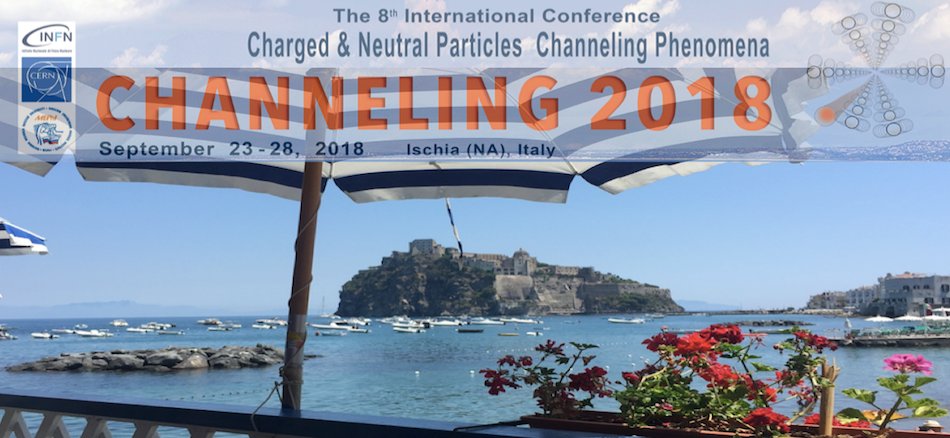Speaker
Mr
Aleksandr Savchenko
(NRNU MEPhI, Russia, Moscow)
Description
X-ray transition radiation (XTR) is known to be the only precise instrument for identification of charged particles with a Lorentz factor more than 1000. With increasing of charged particle energies at modern and future colliders a separation of high energy collision products becomes a complicated task. A further development of the XTR detector techniques is required for many physics studies. In order to increase a particle identification capability of XTR detectors, all possible features of XTR should be exploited. For instance, along with the energy spectrum of XTR, the angular distribution of XTR can give additional important information about Lorentz factor of the particles. One of the examples for the application of this technique can be a forward physics experiment at LHC called Small Angle Spectrometer (SAS). The XTR detector will play a crucial role in this experiment making proton, kaon and pion separation in the 1 – 6 TeV particle energy range.
In this work, recent experimental results of simultaneous measurements of the XTR photon energy and production angle are presented. They are compared with theoretical prediction (analytical expressions for both energy and angular distributions) and simulations (RADIATOR and GEANT4). Future plans of an improvement of the quality of the detector are discussed.
Author
Dr
Anatoli Romaniouk
(MEPHI/CERN)
Co-authors
Mr
Aleksandr Savchenko
(NRNU MEPhI, Russia, Moscow)
Dr
Alexey Tishchenko
(National Research Nuclear University "MEPhI")
Dr
Christoph Rembser
(CERN)
D. Krasnopevtsev
(National Research Nuclear University “MEPhI”, Moscow, Russia)
D. Ponomarenko
(National Research Nuclear University “MEPhI”, Moscow, Russia)
Ms
Darya Sergeeva
(National Research Nuclear University "MEPhI")
Dr
Doug Schaefer
(CERN)
E. Heijne
(CERN, Geneva, Switzerland)
E. Shulga
(National Research Nuclear University “MEPhI”, Moscow, Russia)
E. Vallazza
(INFN Trieste, Trieste, Italy)
Dr
Enrico Junior Schioppa
(CERN)
F. Dachs
(CERN, Geneva, Switzerland)
Fabio Gargano
(BA)
Francesco Loparco
(BA)
Dr
Heinz Pernegger
(CERN Physics Department)
J. Alozy
(CERN, Geneva, Switzerland)
K. Filippov
(National Research Nuclear University “MEPhI”, Moscow, Russia)
K. Vorobev
(National Research Nuclear University “MEPhI”, Moscow, Russia)
K. Zhukov
(Lebedev Physical Institute, Moscow, Russia)
M. Cherry
(Lousiana State University, Bâton-Rouge, USA)
M. Prest
(INFN Milano Bicocca, Milan, Italy)
M. Soldani
(INFN Milano Bicocca, Milan, Italy)
M. van der Heijden
(Nikhef, Amsterdam, The Netherlands)
Mario Nicola Mazziotta
(BA)
Dr
Martin van Beuzekom
(Nikhef)
Michael Campbell
(CERN)
Prof.
Mikhail Strikhanov
(National Research Nuclear University "MEPhI")
N. Belyaev
(National Research Nuclear University “MEPhI”, Moscow, Russia)
P. Teterin
(National Research Nuclear University “MEPhI”, Moscow, Russia)
Paolo Spinelli
(BA)
Piergiorgio Fusco
(BA)
R. Radomskii
(National Research Nuclear University “MEPhI”, Moscow, Russia)
S. Doronin
(National Research Nuclear University “MEPhI”, Moscow, Russia)
S. Konovalov
(Lebedev Physical Institute, Moscow, Russia)
S. Smirnov
(National Research Nuclear University “MEPhI”, Moscow, Russia)
V. Mascagna
(INFN Milano Bicocca, Milan, Italy)
Dr
Vladimir Tikhomirov
(P.N.Lebedev Physical Institute of the Russian Academy of Science)
X. Llopart
(CERN, Geneva, Switzerland)
Y. Smirnov
(National Research Nuclear University “MEPhI”, Moscow, Russia)

